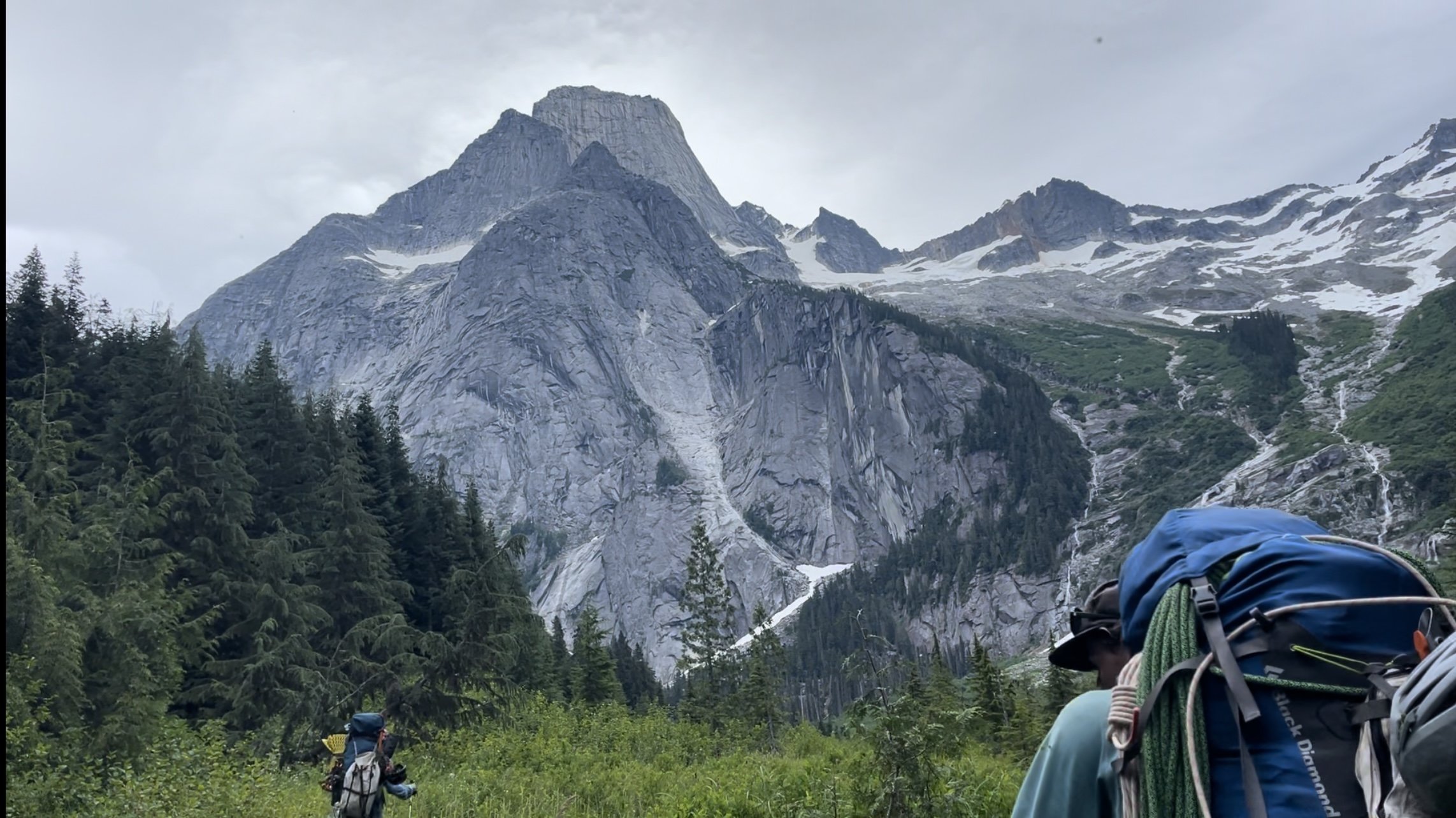To avoid a party climbing above, Dalpe decided to traverse left near the end of the second pitch. After joining Dream On, he found the climbing changed character. The next pitch was less forgiving and had only one protection bolt. At the top of his third lead, Dalpe recalls thinking, “This was not the day I had in mind.” The climbing above appeared even more demanding. “I looked up the next pitch and decided it was not worth it.”
At 1:30 p.m., his climbing partner arrived at the belay, and Dalpe told her they would be descending from there. The partner carried a traditional belay/rappel device, though she was not experienced enough to rappel. Dalpe planned to use his Grigri to lower her and then make a single-line rappel, using her weight at the opposite end of the rope as a counterweight anchor. He untied his partner, threaded the rope end through the rappel rings, retied her, and then used his Grigri to lower her to a prominent ledge. Once there, she traversed to a tree anchor and connected to it with a personal anchor system (PAS). Before lowering her, Dalpe said to his partner, “Go to the tree anchor, clip in, and do nothing.”
Dalpe set his Grigri up to rappel and started down the single strand. Halfway to the tree anchor, the rope became suddenly unweighted and Dalpe fell. He recalls, “I was tumbling and everything went black. Then I hit something…and went black. I hit something again…black. I hit another thing…black. I was probably screaming for five seconds.”
While falling, the rope through Dalpe’s Grigri went slack and, “I saw the rope swirling orange and I kept asking, ‘When am I gonna stop?’ ”
Dalpe hit the ground, rolled a distance, and came to rest at a tree. Climbers approaching the cliff rushed up to help. One called for an ambulance at 1:45 p.m. Another team that was on Born Again rappelled to Dalpe’s partner and lowered her to the ground. At 3:45 p.m., Dalpe was transported by ambulance to the hospital.
He escaped with relatively minor injuries considering his 200-foot tumble (He was not wearing a helmet.) He suffered a broken sternum, two broken bones in the right foot, plus multiple abrasions to his scapula and back of his head. He spent one month on a couch, and four months later he was climbing 5.13 again. (Sources: Interview with Dany Dalpe and report from British Columbia Emergency Health Services.)
Analysis
It appears the rappel failed when Dalpe’s partner somehow managed to untie her knot as he rappelled the single strand. Later, her half-tied figure-8 was discovered to be cinched tight; her end of the rope with the half-tied knot had pulled through the rappel rings—no doubt slowing Dalpe as he tumbled toward the ground. It seems likely she began to untie as soon as she clipped into the anchor, and that some element of the system temporarily held Dalpe’s weight until he had already committed to the rappel.







